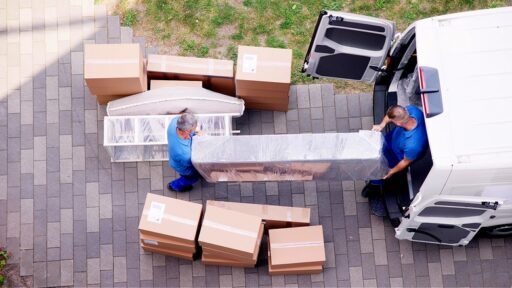Moving to a new home is a big transition. Add kids into the mix, and things can quickly get overwhelming. Toys everywhere. Routines upended. Tears at unexpected times. But here’s the truth: moving with kids doesn’t have to be chaos.
With a clear strategy and thoughtful preparation, you can turn a potentially stressful experience into something manageable—and even meaningful—for the whole family. Below is a practical, matter-of-fact guide to making your next family move as smooth as possible.
Understanding the Challenges of Moving with Kids
Children process change differently from adults. What may seem like an exciting new chapter to you can feel confusing, scary, or even unfair to them.
Younger children may struggle with the disruption to their familiar routines. They may not understand why everything is being packed into boxes or why they have to say goodbye to their bedroom. Teenagers, on the other hand, might be more resistant to leaving behind their friends, schools, and comfort zones.
Each age group brings its own set of emotional responses. Recognizing this upfront allows you to respond with patience rather than frustration. It’s not just about moving boxes—it’s about pushing their entire world.
The Emotional Side: Preparing Kids for the Move
Start with a conversation. Be honest but gentle. Explain the reasons for the move in terms they’ll understand. Reassure them that while some things will change, the important stuff—like your love and your support—will stay the same.
Involve your kids in the process from the start. Give them some control over small decisions, like choosing the color of their new room or which toys to pack first. This turns the move from something that’s happening to them into something they’re actively part of.
Books, cartoons, or short stories about moving can help younger kids understand what’s going on. For older kids, please encourage them to create a scrapbook or digital photo album of their current home and friends. Let them grieve. Let them talk. Let them feel.
Moving Day Hacks

Moving day doesn’t have to be chaotic, but it will be busy. Plan for that.
Prepare a “first-day kit” that includes snacks, water bottles, basic toiletries, chargers, a change of clothes, and any other essentials your kids might need immediately. Keep it easily accessible.
Set up a small area with books, crayons, or a tablet to keep them occupied during loading and unloading. If possible, assign one adult to supervise the children while the other coordinates with the movers. Alternatively, consider having a friend or relative take them out for the day.
Working with a trusted moving company can also help the day run more smoothly—experienced professionals know how to keep things on track while you focus on your family.
Expect some emotional turbulence. Kids might cry, act out, or withdraw. These reactions are normal. Stay calm and compassionate.
Creating a Kid-Friendly Moving Strategy
You don’t need a military-style operation, but you do need a plan. And one that includes your kids.
Timeline Planning
Don’t leave everything until the last minute. Kids thrive on routine, so the more predictable your moving timeline is, the better. Break the process down into manageable phases—decluttering, packing, moving day, and settling in. Mark key dates on a calendar and review it together so everyone is aware of upcoming events.
Involving the Kids
Even small children can help. Let them pack a “treasure box” of favorite items. Use colored stickers or fun labels so they can identify their belongings. Make it a game—who can pack the most socks the fastest?
Packing by Priority
Not everything needs to be packed at once. Set aside a few boxes for essentials, such as pajamas, snacks, favorite toys, and toiletries. Label these “open first.” It’s also smart to pack room by room so things stay organized.
Divide and Conquer
Older kids can take on simple tasks, such as taping boxes or checking rooms for missed items. If your kids are too young to help, consider arranging childcare on a moving day. You’ll be more productive and less stressed.
Keeping Routines and Sanity During the Transition
Children are creatures of habit. Moving can turn their world upside down—but you can provide balance by keeping some routines intact.
Stick to regular mealtimes and bedtimes as much as possible. Familiarity brings comfort. If your child always reads before bed, keep that going, even if it’s on an air mattress in a half-unpacked room.
Pack a few favorite items—such as pillows, books, and music—that make the new space feel familiar. Visual countdowns or move-themed calendars can help ease the anticipation and reduce anxiety, especially for young kids who struggle with abstract timelines.
Settling In Without the Stress
Once you arrive, focus on making the space feel like home. A good place to start is the kids’ rooms. Unpack their things first and let them arrange furniture or choose decorations. Familiar surroundings ease the transition.
Take a short walk around the neighborhood together. Look for playgrounds, corner stores, or interesting landmarks. Familiarize them with their new environment by allowing them to explore.
Help your kids make a new routine. Simple things, like Friday pizza nights or Saturday morning walks, can offer a comforting structure. If they’re starting at a new school, arrange a tour or meet-and-greet in advance.
Bonus Tips for Long-Distance Moves
If your move involves a long road trip or cross-country journey, a bit of extra planning goes a long way.
Break up travel days with rest stops, parks, or quick sightseeing breaks. Keep the car or carry-on bag stocked with snacks, wipes, and entertainment. If you’re flying, explain the process ahead of time so your kids know what to expect at airports.
Look up schools, pediatricians, and extracurricular activities in your new area before the move. And encourage your kids to stay in touch with old friends through video calls, letters, or postcards.
Conclusion
Moving with kids is a big deal, but it doesn’t have to be overwhelming. With a bit of planning, a steady routine, and a healthy dose of empathy, you can make the process smoother for everyone involved.
Remember, this isn’t just a move. It’s an opportunity to teach your children how to adapt, embrace change, and create new memories. Handle the chaos with a calm mind, and you’ll all land on your feet.







